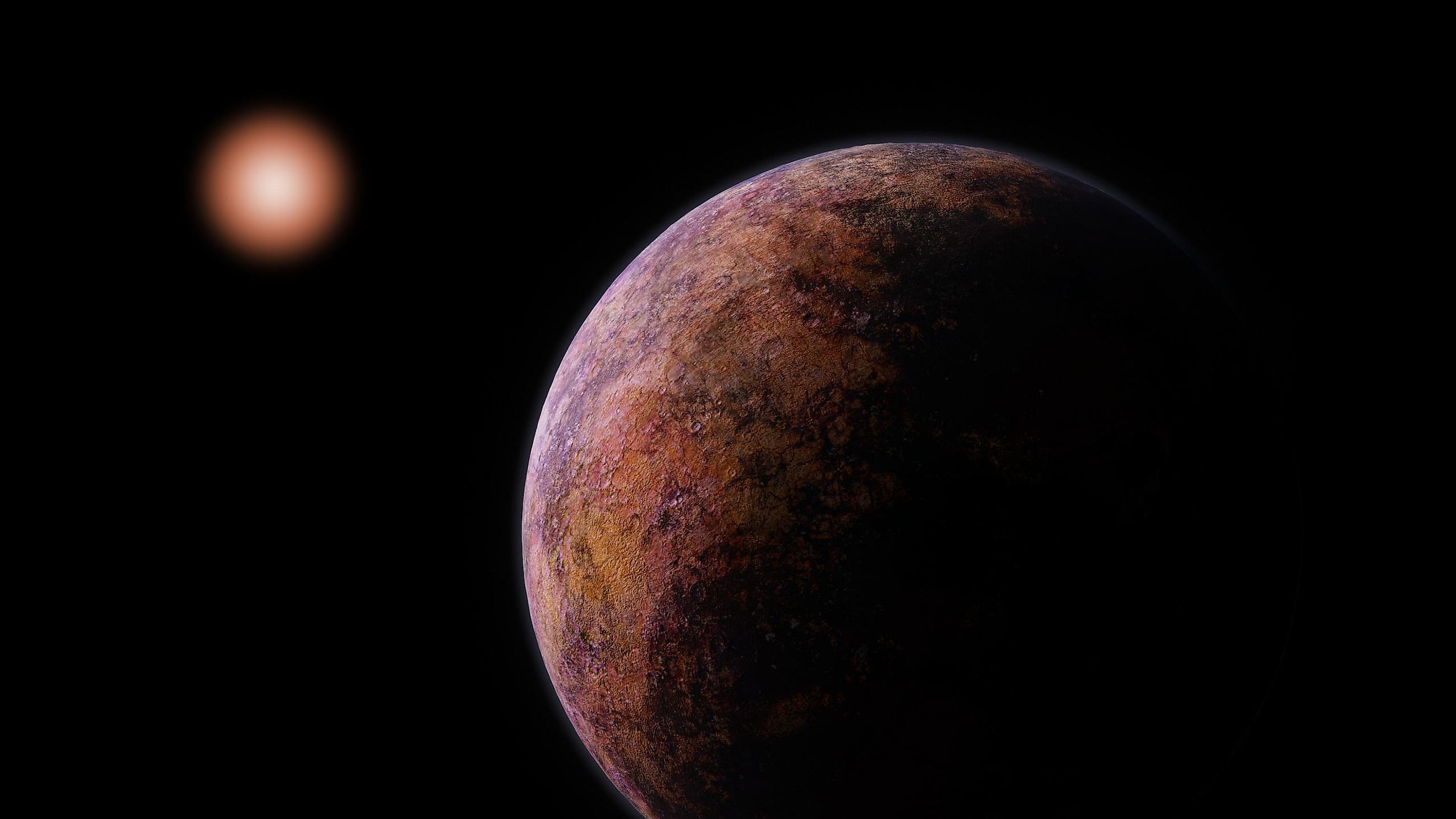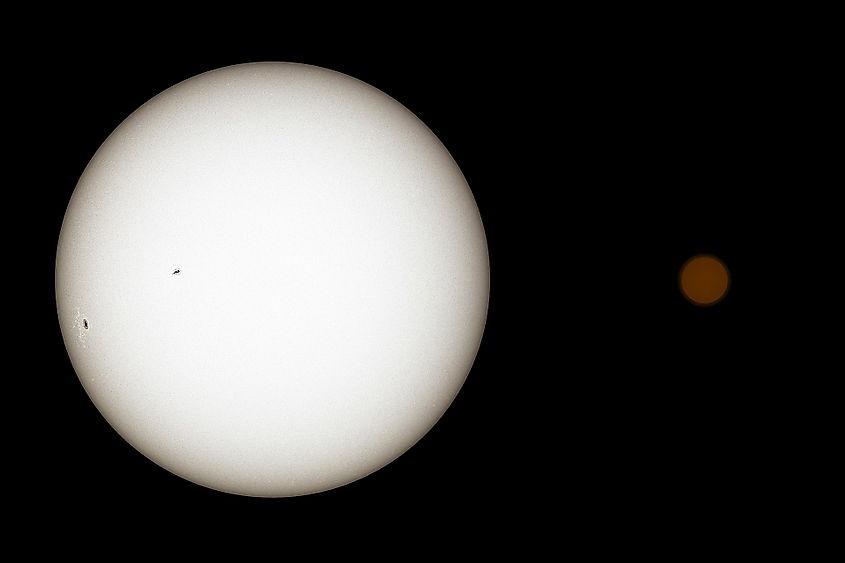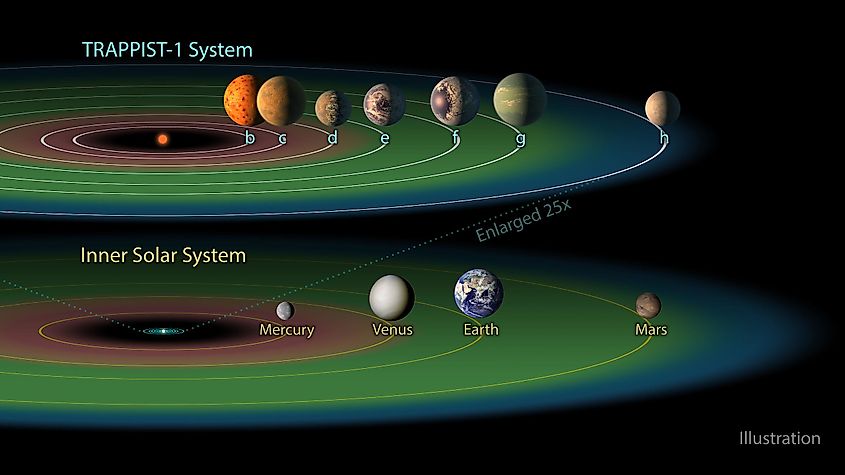
The Solar System With Four Habitable Planets
Of the eight planets in our solar system, only one orbits within the sun’s habitable zone. That planet is our home world, Earth. Mars and Venus may once have orbited within the habitable zone, yet that is no longer the case. Thus, the Earth is unique among the planets in our solar system given its location around the sun. However, Earth may not be as unique when compared to other worlds beyond our solar system. In 2017, astronomers confirmed the existence of a solar system containing seven planets, four of which orbit within the habitable zone of their parent star.
TRAPPIST-1 Star

The seven planets found in 2017 all orbit the star TRAPPIST-1, a red dwarf star located in the constellation Aquarius some 40 light years away. As a red dwarf, TRAPPIST-1 is much smaller, colder, and dimmer than our sun. It is only 9% the mass of the sun, 12% its size, and only 0.055% as bright. In fact, TRAPPIST-1 has a mass that is just barely high enough for nuclear fusion to occur. If TRAPPIST-1 were any smaller, it would likely be a brown dwarf rather than a main sequence star.
TRAPPIST-1 Planets

In 2017, astronomers announced the discovery of seven exoplanets orbiting TRAPPIST-1. This makes it one of the largest solar systems ever discovered in terms of the number of planets. Interestingly, the actual size of the solar system is rather small. Each of the seven planets orbit their star at a distance smaller than the distance between the sun and Mercury, making the TRAPPIST-1 system an extremely compact solar system. The seven planets are named alphabetically based on their distance from the central star. Moving outwards, they are ordered: TRAPPIST-1b, 1c, 1d, 1e, 1f, 1g, and 1h. 1b is the innermost of the seven planets and orbits its star at a distance of 1.07-million miles (1.72-million kilometres), while the outermost planet, 1h, orbits at a distance of 5.7-million miles (9.2-million kilometres). For comparison, Mercury orbits the sun at an average distance of 36-million miles (58-million kilometres).
Of the seven planets in the TRAPPIST-1 system, four are located within the habitable zone, making TRAPPIST-1 the solar system with the highest number of planets in the habitable zone ever discovered. The planets within the habitable zone are 1d, 1e, 1f, and 1g. Both 1d and 1e are smaller than Earth, while 1f is nearly identical in size to our planet and 1g is larger. It is extremely likely that all of these planets are rocky worlds as none have a mass high enough to become a gas giant. Since not much is known other than the mass and orbital distances of the four planets in the habitable zone, astronomers do not know if any of these planets are truly habitable. Future observations will have to reveal the atmospheric composition and density to determine the true habitability of these worlds.











